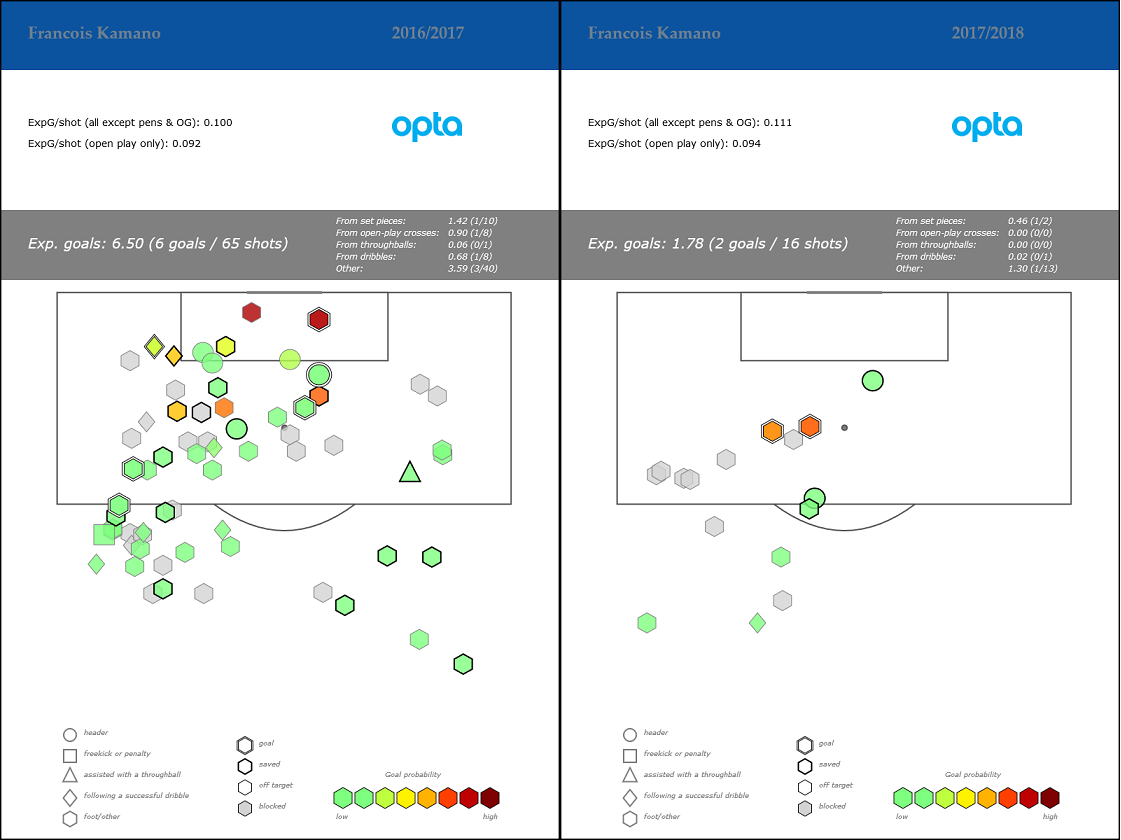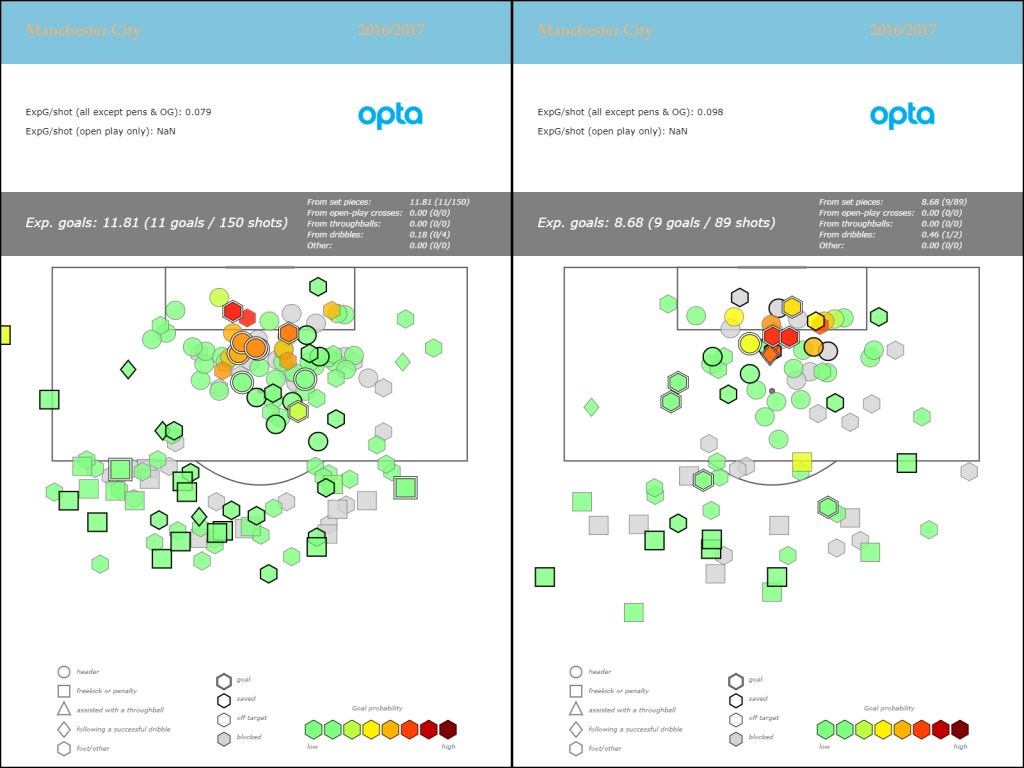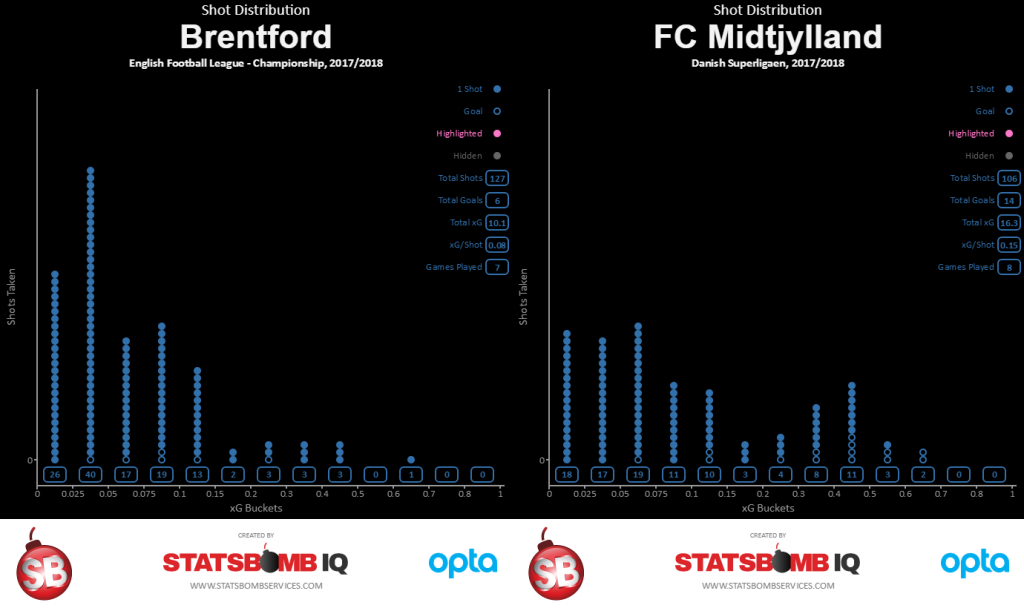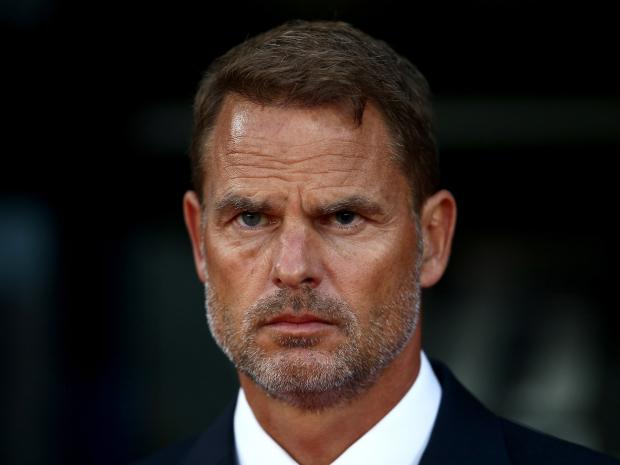2017-18 in Ligue 1 was never going to be about a title race in France, because that was sewn up the minute PSG bought Neymar from Barcelona (and just to rub it in, they got maybe the best prospect in world football as well). Rather, where the intrigue in Ligue 1 came from was the cluster of six or so teams below PSG fighting for two Champions League spots. At least for this writer, there was a genuine curiosity about how the standings would shake out in positions 2 to 7 considering the massive changes that had gone on. After seven games where are we? Monaco have been fine despite selling the majority of their title winning squad, Lyon have produced attacking numbers that are quite middling compared to the talent at their disposal, while Marcelo Bielsa and Lille are Ligue 1’s travelling circus act.
Bordeaux were one of the teams that were mentioned in that block of six, an intriguing side that could have a high ceiling because of the attacking talent gathered over the past few windows. They are led by a respectable manager in Jocelyn Gourvennec, and on a mandate of sustainability by buying unheralded talents either inside the league or elsewhere. It’s allowed them to get a player like Nicolas De Preville, one of Ligue 1’s most underrated attackers over the past 3-4 years. Younousse Sankhare is a talented midfielder who can press individuals with his athleticism while providing off ball runs in the final third. Alexandre Mendy came in the summer for under €1M despite putting up relatively monster xG numbers at Guingamp (albeit nearly 50% of those minutes came as a substitute). This has been a carefully built squad on a tighter budget than others in Ligue 1.
It should be emphasized just how deep this team is in attack for a club that’s not having to play European football. Malcom and Kamano are givens in the 4-3-3 setup, but they have a rotating cast of characters that they could play in between them at striker with De Preville and Mendy. That’s not to mention Gaetan Laborde who was solid last year, and Jonatan Cafu who has been frisky in the limited minutes he’s played this year. That very well might be six competent to great players to work with over a full season.
The results so far have been largely impressive. Only PSG has a better total shot and expected goal ratio in the league, and there’s nothing exceedingly alarming with the performances put in. Sure, over the long term they’re probably not going to convert goals to shots on target at just over 37%. At the very least however, they have decent enough shot location to go along with healthy shot volume in a league that isn’t exactly renown for teams shooting over 14 times a match. There are worse foundations to have in attack than what Bordeaux have done so far this year.
While perhaps simplistic, one could say that the basis of Bordeaux’s attack is based on transition football. It’s a bit weird considering that this wouldn’t be considered a counter pressing team that uses pressure to create high quality chances the other way, and they don't give you the feeling that they're playing fast football, but it does seem like they’re able to capitalize on individual mistakes.
Bordeaux make this work by always having people commit on the counter, having as many or even more players going forward than the opposition have defending. This is where things like pushing Jeremy Toulalan into a CB position works great, because now you can have more mobile players who can catch up in the play along with the front three. It also takes advantage of Toulalan's passing sometimes being an outlet to get the pace quickened.
One thing I'm still wondering with Bordeaux is what is their best lineup within their 4-3-3 setup. On the one hand, De Preville is the best talent that they could put in striker considering his ability to both create for others and himself during his time at Reims and Lille. A slight worry is that considering how much he loves having the ball on his feet, and the same could be said for Malcom and Kamano, it could lead to possessions where it just ends up with them taking really bad shots with little movement to work with. I think having Mendy in there makes for a better fit because then you have a playmaker, an inside shooting forward, and a poacher (to go along with Mendy's ability to hold off the ball and let teammates come to the ball). There's a higher ceiling with De Preville in the lineup, but there's a higher floor with Mendy. It'll be interesting to see where this goes because Mendy has been a killer super sub so far.
A problem that could be made with how Bordeaux set up defensively is while they do have the ability to press in certain situations from a medium block, they are still quite susceptible to passes that break their defensive structure. Considering how much they rely on Sankhare to hurry opponents and get play going the other way, sometimes the opposition will drag him out and find openings in the midfield to pass into space and create semi dangerous opportunities.
Now the good news is that despite those concerns, there’s maybe only three teams in Ligue 1 who can really punish Bordeaux for these problems. And considering the issues Lyon have had so far in attack, it very well might be that only Monaco and PSG could punish a defensive system like the one Bordeaux have implemented. And in the context of merely just trying to finish in the top 3, that might well be good enough. So far this season, the results have been resolute. Only PSG, Montpellier, and Caen concede fewer shots per game and Bordeaux rank in the top three in quality of chances conceded. While the flaws of the system are evident, it might not mean much by season’s end.
We highlighted Francois Kamano as a player to watch coming into this season, someone who in a broad sense had a fine season last year. He shot a lot, and produced enough to make the math work in his favor. What I also found interesting about Kamano's game last year was he created high quality chances on average compared to the overall low amount of overall chances he put up. It was a poor man's version of what Ousmane Dembele did last year, and they both share a similar trait in which passing models don't exactly portray them in the greatest light because of their penchant for gambling on passes.
The real curiosity with Kamano was with better attacking talent to play with, would he be able to trade maybe 0.5-1 bad shots a game for something better, because while he's shown he is able to create premium chances for others, better shot selection from him could enable him to take the next step as a player. Good news: he's taking around 1 less shot per 90 minutes. Bad news: that hasn't exactly made his shot selection appreciably better.

Now I get it, he's 21 and there's time for him to figure this out. And it's still early in the season, but we're looking at just over 5000 minutes of game time in his Ligue 1 career and the evidence is showing that on average, the shots he takes are speculative at best. If this aspect of his game doesn't improve, it could very well be that we're already seeing the best of Francois Kamano as a player, and that would be a shame.
And then there’s Malcom, who’s arguably the crown jewel on this Bordeaux side. The yin to Kamano’s yang, he’s much more of a creator for others while probably having more functional athleticism than his teammate. He can shift and juke to beat defenders, use his acceleration when needing to get on the end of passes. Whereas Kamano is of the “shoot first and ask questions later” mentality, it’s almost frightening how much Malcom will try and create dangerous opportunities with his dribbling and passing. So far though, the results have been splendid as he’s been able to make something out of nothing with some of his solo runs:
Now you don’t need me to tell you about the problems that come with analyzing seven games without a considerable grain of salt, but it has to be said that so far into the season, Malcom has performed like one of the better creative wide men in Europe. If there ever was a “Leap in Progress” alarm, it would be ringing loud right now with what the kid is doing:

Again, it's a small number of games and this could very well be just a nice run of form and not truly representative of his true talent level as a player. But even if he’s somewhere between this current form and what he did previously, we’re still talking about a very talented creative winger who is still be three or so years away from hitting his prime. It could very well be that even a lesser version of Malcom would be good enough to help Bordeaux to make a genuine run at the top three.
In a similar manner to Nice last season, teams like Bordeaux need things to go their way if they’re to make a run at the top three in Ligue 1. The difference of budget compared to the likes of Lyon, Monaco and Marseille will always make it tough. In Nice’s case, it was a combination of breakout performances from the likes of Alassane Plea and Jean Micheal Seri and benefiting from the skills of Lucien Favre. With Bordeaux, it might need to be that Malcom in his second full season in France turns into a top 5-10 attacker in the league and incremental growth from players like Kamano and Mendy help bridge the gap for this season. Seven games in doesn’t make a season, and Bordeaux’s numbers will take a hit once they play the likes of PSG and Monaco. Even their first seven games could be nitpicked if needed; while holding Lyon to 8 shots and coming back from 3-1 was impressive, it was done while up a man for the majority of the match. And they were largely unimpressive against Lille when they were once again up a man. I'm also a bit skeptical of whether the front three can click long term, for all that they are talented. Even so, they potentially have six capable attackers, a mobile midfield that can assist in the transition football that they work best in, and a manager who smartly turned a static 4-4-2 setup last year into something greater.
Seven games in and so far so good. It might just end with Bordeaux's first trip back to the Champions League since 2010.
























